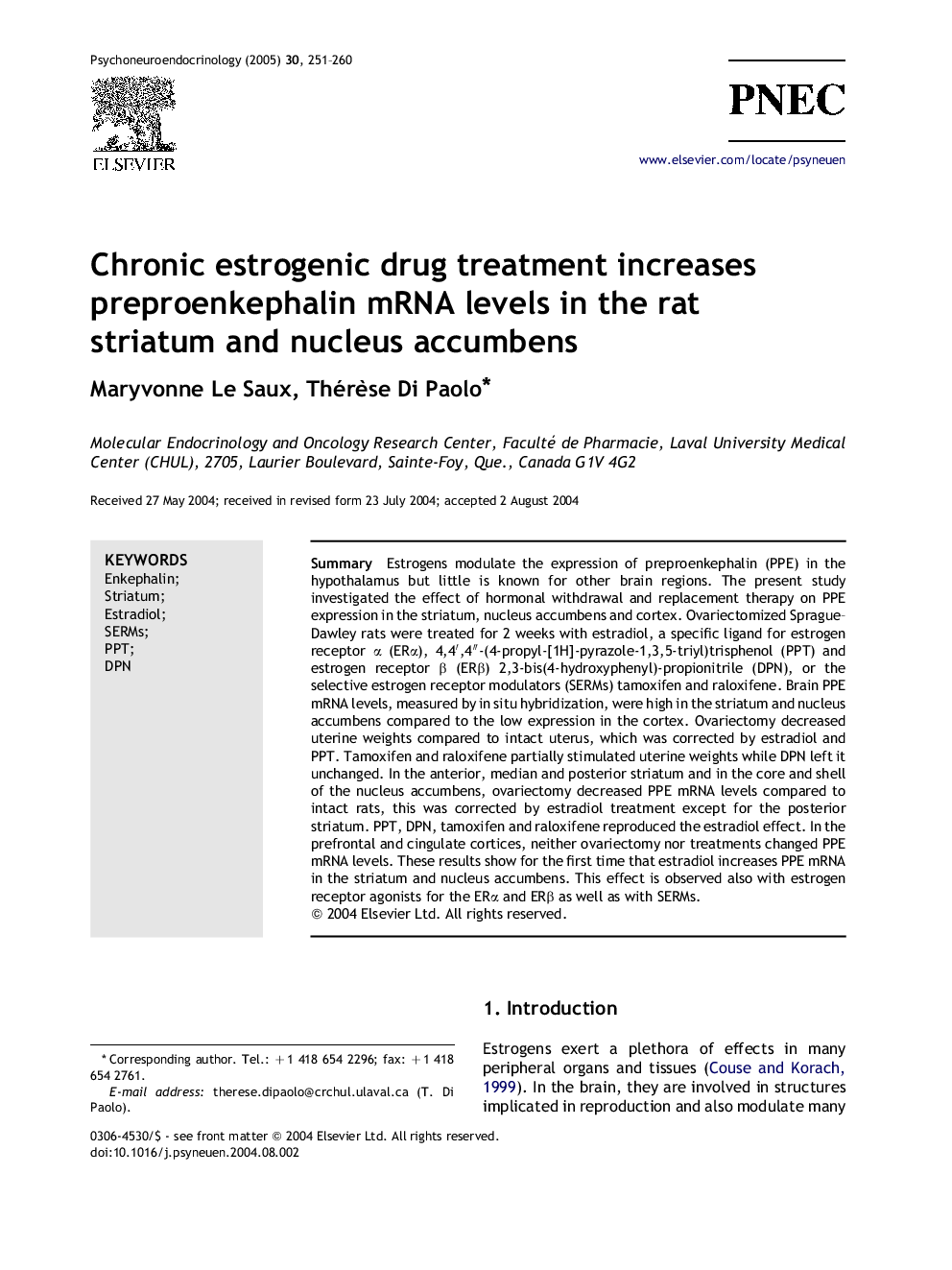| Article ID | Journal | Published Year | Pages | File Type |
|---|---|---|---|---|
| 10306182 | Psychoneuroendocrinology | 2005 | 10 Pages |
Abstract
Estrogens modulate the expression of preproenkephalin (PPE) in the hypothalamus but little is known for other brain regions. The present study investigated the effect of hormonal withdrawal and replacement therapy on PPE expression in the striatum, nucleus accumbens and cortex. Ovariectomized Sprague-Dawley rats were treated for 2 weeks with estradiol, a specific ligand for estrogen receptor α (ERα), 4,4â²,4â³-(4-propyl-[1H]-pyrazole-1,3,5-triyl)trisphenol (PPT) and estrogen receptor β (ERβ) 2,3-bis(4-hydroxyphenyl)-propionitrile (DPN), or the selective estrogen receptor modulators (SERMs) tamoxifen and raloxifene. Brain PPE mRNA levels, measured by in situ hybridization, were high in the striatum and nucleus accumbens compared to the low expression in the cortex. Ovariectomy decreased uterine weights compared to intact uterus, which was corrected by estradiol and PPT. Tamoxifen and raloxifene partially stimulated uterine weights while DPN left it unchanged. In the anterior, median and posterior striatum and in the core and shell of the nucleus accumbens, ovariectomy decreased PPE mRNA levels compared to intact rats, this was corrected by estradiol treatment except for the posterior striatum. PPT, DPN, tamoxifen and raloxifene reproduced the estradiol effect. In the prefrontal and cingulate cortices, neither ovariectomy nor treatments changed PPE mRNA levels. These results show for the first time that estradiol increases PPE mRNA in the striatum and nucleus accumbens. This effect is observed also with estrogen receptor agonists for the ERα and ERβ as well as with SERMs.
Related Topics
Life Sciences
Biochemistry, Genetics and Molecular Biology
Endocrinology
Authors
Maryvonne Le Saux, Thérèse Di Paolo,
